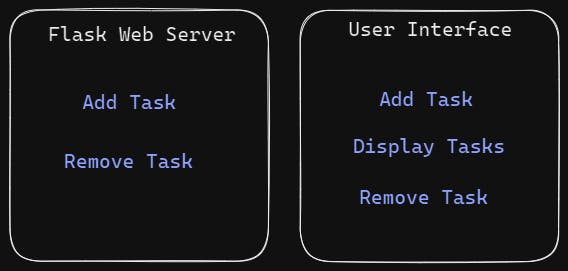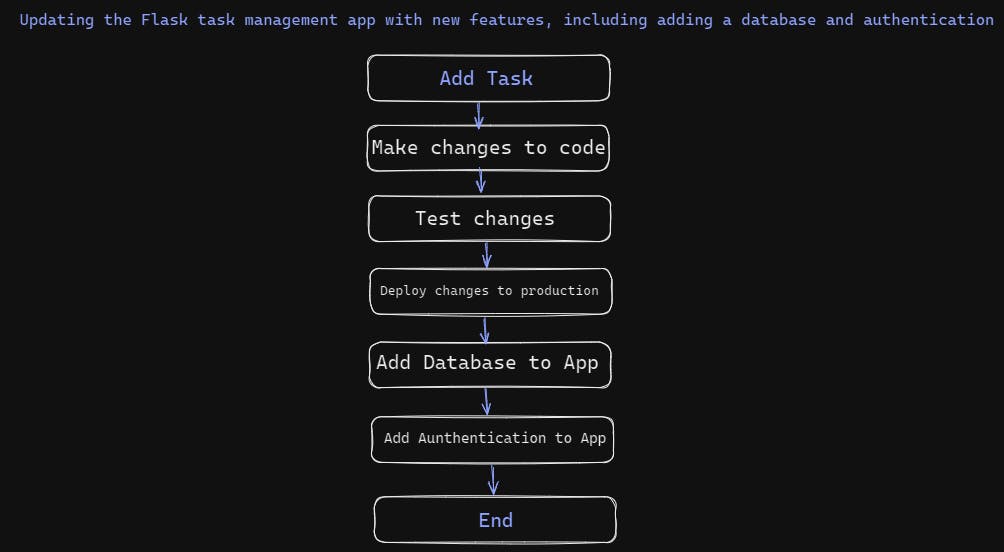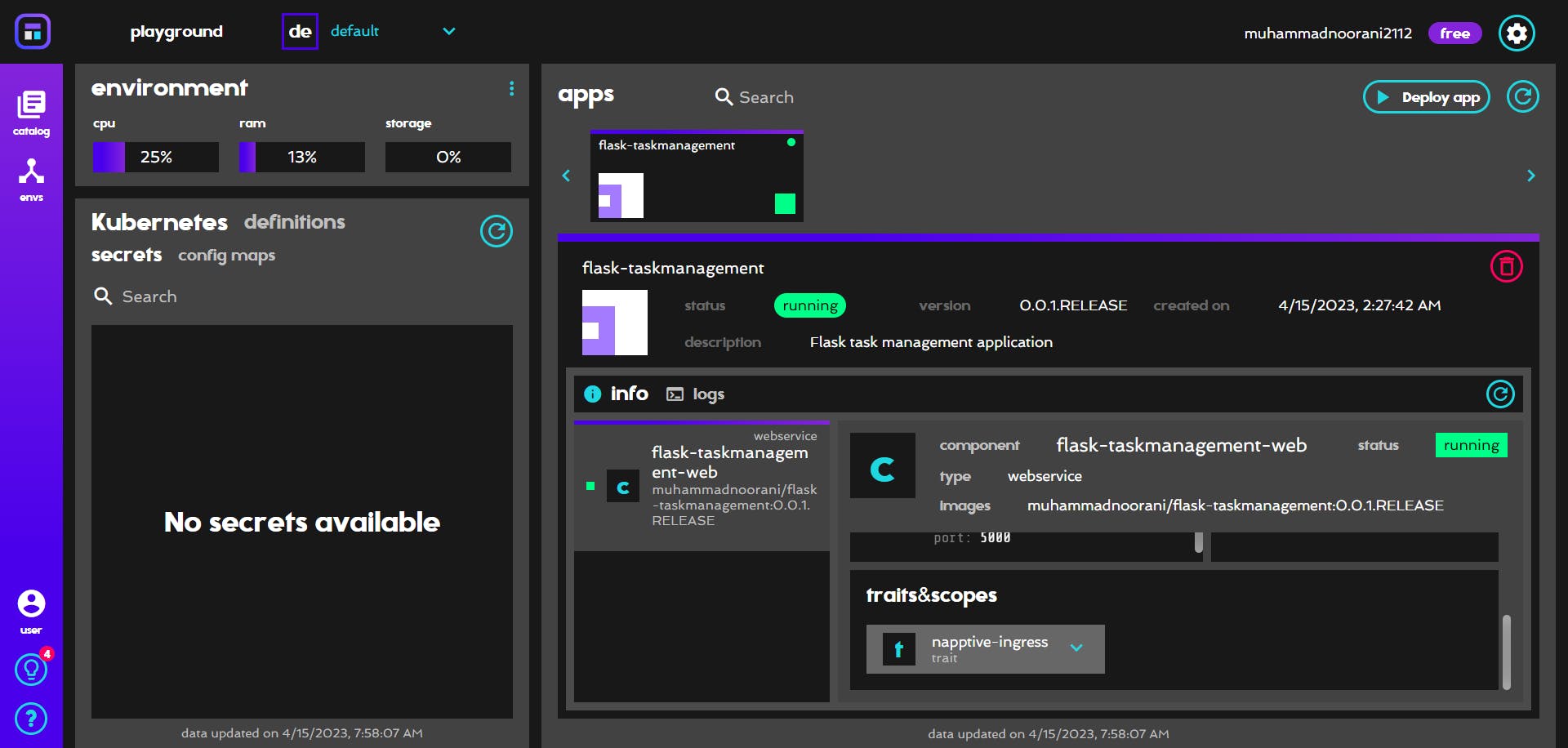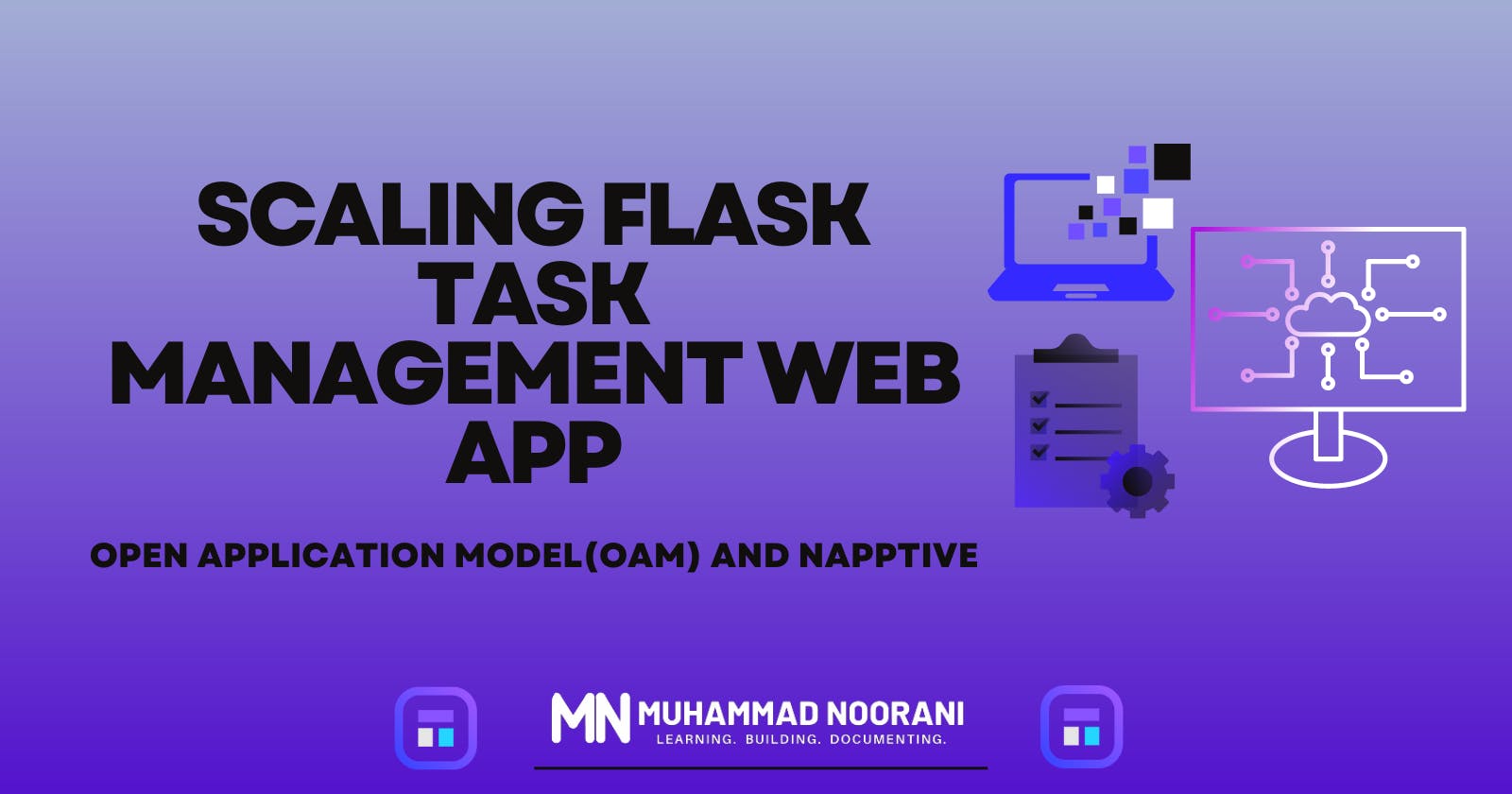Scaling Flask Task Management Web App with Open Application Model(OAM) and Napptive - A Case Study
Best use-case blog post
Table of contents
- Introduction
- Overview of Open Application Model (OAM)
- Introducing Napptive
- Applying OAM to a Flask Task Management Web-App
- Integrating OAM with Napptive
- Updating the App with New Features
- Monitoring and Managing the App on Napptive
- Lessons Learned and Best Practices
- Conclusion
- Links
- You can find me on these platforms 🤝 :
Introduction
The Open Application Model (OAM) is a powerful way to simplify the development and deployment of cloud-native applications, making it easier to manage applications across different cloud platforms. In this blog post, we'll explore the benefits of using OAM for a simple Flask task management app and how it can improve scalability, reliability, and reduce maintenance and operational costs. We'll also discuss how Napptive, an OAM-compliant platform, can help deploy and manage the app more efficiently.
Note : The application uses local storage in the user's browser to store data.
Overview of Open Application Model (OAM)
a. Key concepts and components
OAM is built around three key concepts:
Components: Represent individual pieces of an application, such as front-end UI, back-end services, or databases.
Application Configurations: Define how components are combined to form an application, including any dependencies and relationships between them.
Traits: Describe operational characteristics of components, such as auto-scaling, ingress routing, or security policies.
b. Benefits of using OAM
Some key benefits of using OAM include:
Simplification of application development and deployment processes.
Improved scalability and reliability through component-based architecture.
Reduced maintenance and operational costs by leveraging platform-agnostic configurations.
Introducing Napptive
a. Overview and features
Napptive is a cloud-native application platform that simplifies the deployment and management of OAM-based applications. With Napptive, you can deploy your applications to any cloud platform that supports OAM, monitor and manage your application's lifecycle, and easily integrate new features and updates.
b. Advantages of using Napptive with OAM
Some advantages of using Napptive with OAM include:
Seamless integration with OAM, simplifying application deployment and management.
Built-in monitoring and logging capabilities for application health and performance.
Automatic scaling and resource management based on defined scaling policies.
Applying OAM to a Flask Task Management Web-App
a. Description of the app
Our Flask task management app is a simple web application that allows users to create, edit, and remove tasks. It consists of a front-end user interface and a list to display the tasks.
b. Architecture and components

We can break down the Flask task management app into the following components:
Flask Web Server
User Interface
Each component can be defined using OAM, allowing us to manage them individually and specify their scaling and security requirements.
c. Using OAM to define the components and traits
To define the components and traits for our Flask task management app, we'll create an OAM configuration file. This file will describe the components, their requirements, and any associated traits such as auto-scaling or security policies.
Integrating OAM with Napptive
a. Setting up a Napptive account
To get started with Napptive, you'll first need to create an account on their platform. Once you've signed up, you'll have access to the Napptive dashboard, where you can manage your applications and deployments.
b. Preparing the app for deployment
Before deploying your Flask task management app on Napptive, you'll need to prepare it by:
Creating a Dockerfile to containerize your application.
Building and pushing the Docker image to a container registry.
Creating an OAM configuration file to define your application's components and traits.
c. Deploying the app using Napptive
With your app prepared and your Napptive account set up, you can deploy the Flask task management app by:
Creating a new application in the Napptive dashboard.
Uploading your OAM configuration file and specifying the Docker image location.
Launching the deployment and monitoring its progress.
Uploading the app to the catalog.
Updating the App with New Features

a. Making changes to the code
When updating your Flask task management app with new features, you'll need to modify the existing codebase. This may involve making changes to the frontend, backend, or both. Be sure to follow best practices for version control by using a platform like Git to track and manage changes to your code.
b. Testing changes
Before deploying any changes to production, it's crucial to test them thoroughly. This ensures that the new features work as intended and that existing functionality remains intact. Implement unit tests, integration tests, and end-to-end tests to verify that the updated code is functioning correctly. Additionally, consider using continuous integration tools like Jenkins, GitLab CI, or Travis CI to automate the testing process.
c. Deploying changes to production
Once you have made changes to the code, tested them, and updated the OAM configuration file, you can deploy the changes to production. Follow these steps to ensure a successful deployment:
Update the app's version number: Increment the version number of your app in accordance with semantic versioning guidelines to reflect the changes you've made.
Backup and rollback plan: Before deploying the updated app, create a backup of the current version in case you need to roll back to a previous version due to unforeseen issues.
Schedule the deployment: Choose an appropriate time to deploy your updated app.
Monitor the deployment: After deploying the changes, monitor the app's performance, error rates, and user feedback to identify and address any potential issues.
Communicate changes to users: Inform your users of the new features and updates by sending out release notes, updating your app's documentation, or providing in-app notifications.
By following these steps, you can successfully update your Flask task management app with new features and ensure a smooth transition to the updated version for your users.
Also, some users may want to add a backend logic, a database for storage and authentication for security purposes, so they can follow these steps:
a. Adding a database
As this Flask task management app grows, will add a database for more efficient data storage and retrieval. To do this, we can define a new database component in your OAM configuration file and specify its requirements, such as the type of database and any necessary connections.
b. Implementing backend logic
Similarly, you may want to enhance the backend logic of your app to support new features or improve performance. To implement these changes, you can update the backend server logic component in your OAM configuration file and modify the application code accordingly.
c. Integrating authentication
To improve security and user management, you can also integrate an authentication system into your Flask task management app. This may involve adding a new authentication component in your OAM configuration file and updating your application code to support user authentication and authorization.
d. Updating the OAM configuration and deploying changes
Once you've made the necessary updates to your application code and OAM configuration file, you can deploy the changes to your existing app on Napptive by:
Rebuilding and pushing the updated Docker image to the container registry.
Updating the application's deployment on Napptive with the new image and OAM configuration.
Napptive will handle applying the changes to the existing deployment, ensuring a smooth transition to the updated version of the app.
Monitoring and Managing the App on Napptive

a. Application health monitoring
Napptive provides built-in monitoring capabilities for your deployed applications, allowing you to track their health and performance. You can view metrics such as CPU and memory usage, response times, and error rates, helping you identify and address any issues that may arise.
b. Log management
Napptive also offers log management features, enabling you to access and analyze your application's logs for debugging and troubleshooting purposes.
c. Scaling and resource management
Using the scaling policies defined in your OAM configuration file, Napptive can automatically scale your application components up or down based on traffic and resource utilization. This ensures that your app remains responsive and performant, even during periods of high demand.
Lessons Learned and Best Practices
Based on these case studies and the Flask task management app experience, the following lessons and best practices can be derived for using OAM and Napptive:
Standardize Application Components: By defining and standardizing application components using OAM, you can achieve a consistent and modular approach to application development, simplifying collaboration and reducing complexity.
Automate Deployment Processes: Leverage Napptive's capabilities to automate deployment processes and minimize manual interventions. This will lead to faster deployments and reduced risk of errors.
Optimize Resource Management: Utilize OAM and Napptive to monitor, analyze, and optimize resource usage, ensuring that your applications are efficient, cost-effective, and scalable.
Establish Auto-scaling Policies: Implement auto-scaling policies to handle varying workloads and ensure optimal performance during peak demand periods.
Embrace a Multi-cloud Strategy: OAM and Napptive can help you deploy your applications across multiple cloud providers, offering flexibility, redundancy, and cost savings.
Conclusion
In this blog post, we've explored the use case of how the Open Application Model (OAM) and Napptive can help simplify and scale a Flask task management app, improving its reliability and reducing maintenance and operational costs in a very simple and easy manner.
By defining the app's components and traits using OAM, we can easily deploy and manage the app on Napptive, a cloud-native application platform that supports OAM.
With the ability to update and expand our app's features, monitor its health, and automatically scale its resources, OAM and Napptive provide a powerful solution for developing and managing modern cloud-native applications.
Links
Deployed App URL: Live Demo - Flask Task Management App
GitHub Repository: GitHub - Flask Task Management App Source Code
Docker Hub Repository: Docker Hub - Flask Task Management Image
You can find me on these platforms 🤝 :
Let's connect

